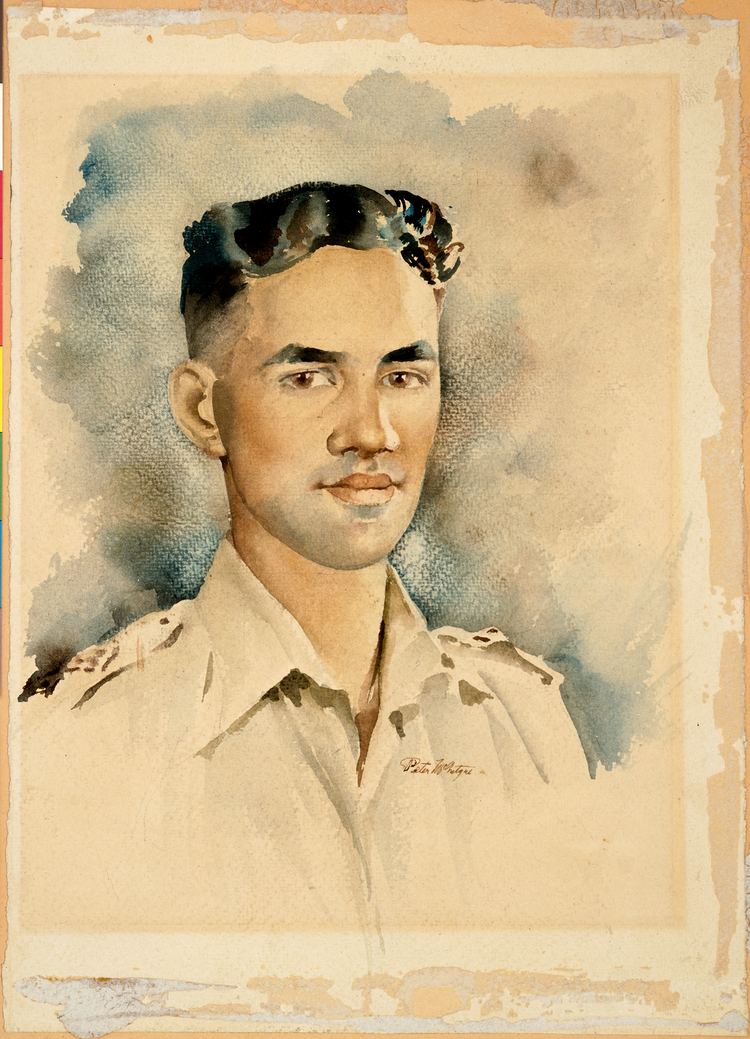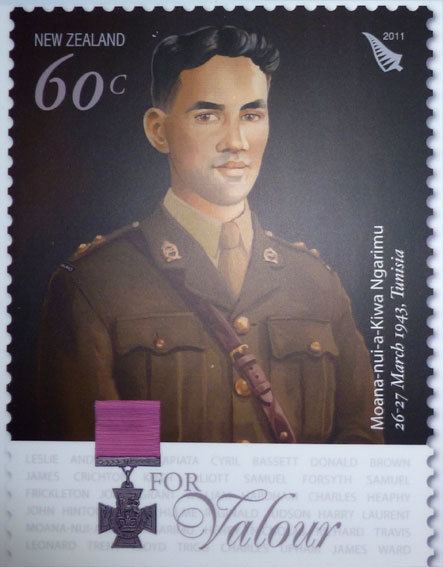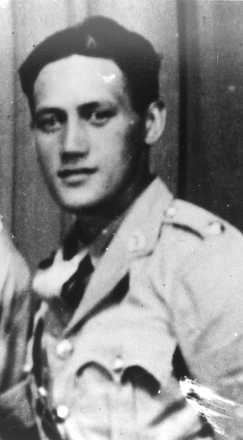Unit 28th (Maori) Battalion Rank Second Lieutenant | Years of service 1940-43 Role Soldier Name Moana-Nui-a-Kiwa Ngarimu | |
 | ||
Similar People Apirana Ngata, Bernard Freyberg - 1st Baron, Alexander Papagos, Thomas Blamey, Kurt Student | ||
The challenge ng rimu vc and 28th m ori battalion scholarship fund board
Moana-Nui-a-Kiwa Ngarimu VC (7 April 1918 – 27 March 1943) was a New Zealand soldier and posthumous recipient of the Victoria Cross, the highest award for gallantry in the face of the enemy that can be awarded to British and Commonwealth forces.
Contents
- The challenge ng rimu vc and 28th m ori battalion scholarship fund board
- Descendants recall Ngarimus VC investiture ahead of its 70th anniversary
- Early life
- Military career
- Victoria Cross citation
- The medal
- References

Descendants recall Ngarimu's VC investiture ahead of its 70th anniversary
Early life

A Māori of Ngati Porou and Te Whanau-a-Apanui descent, Ngarimu was born on 7 April 1918 in Whareponga in the East Coast region. He was the son of Hamuera Meketu Ngarimu, and his wife Maraea. Materoa Reedy was his father's sister, and Arnold Reedy was his cousin. He grew up in Ruatoria where he attended Hiruharama School before going on to attend Te Aute College at Poukawa in Hawkes Bay. After completing his fourth form year, he worked as a shepherd on his father's sheep farm.
Military career

Following the outbreak of the Second World War, Ngarimu joined the New Zealand Army on 11 February 1940, volunteering for the 28th (Māori) Battalion. The battalion, which embarked in May 1940 with the 2nd Echelon of the 2nd New Zealand Expeditionary Force was destined for the Middle East to join the 1st Echelon, but instead was diverted to England in May 1940 where it formed part of the island's defence against a possible German invasion. The battalion eventually arrived in Egypt in March 1941.

Ngarimu served through the battles of Greece and Crete after which he participated with the battalion during the North African Campaign. Commissioned in April 1942, he served for a time as an intelligence officer before being given command of his own platoon.

By March 1943, the campaign in Africa had moved to Tunisia. The 2nd Division, of which the Māori battalion was part, was tasked with the capture of the Tebaga Gap, which disrupted otherwise mountainous terrain. Several hills overlooked the gap, which itself was forced relatively easy, although several hills remained in German hands. One such hill was Point 209, held by the 2nd Battalion, 433 Panzer Grenadier Regiment of the 164 Light Division. Ngarimu's company was allocated the objective of the capture of Point 209. On the afternoon of 26 March, he led his men up the slope and captured what was believed to be the top of Point 209, although it transpired to be a false summit and a feature lower on the slopes of Point 209. Fierce fighting transpired as the Germans attempted to drive Ngarimu's forces off the hill. Twice wounded, he and his men defended their position from several counter-attacks during the night. His position reinforced the following morning, he was killed during the next counter-attack.
The false summit remained in the hands of Ngarimu's company, and the Germans still on Point 209 itself surrendered the same day once artillery support had been brought to bear on Point 209. Ngarimu is buried in Sfax War Cemetery, Tunisia, and is commemorated by a scholarship promoting education of Māori.
Victoria Cross citation
The citation from the London Gazette dated 4 June 1943 reads:
'"The KING has been graciously pleased to approve the posthumous award of the Victoria Cross to Second-Lieutenant Moana-Nui-a-Kiwa Ngarimu.
"During the action at the Tebaga Gap on 26 March 1943, 2nd Lieutenant Ngarimu commanded a platoon in an attack upon the vital hill feature, Point 209. He was given the task of attacking and capturing an under-feature forward of Point 209 itself and held in considerable strength by the enemy. He led his men with great determination straight up the face of the hill, undeterred by the intense mortar and machine-gun fire, which caused considerable casualties. Displaying courage and leadership of the highest order, he was himself first on the hill crest, personally annihilating at least two enemy machine-gun posts. In the face of such a determined attack the remainder of the enemy fled, but further advance was impossible as the reverse slope was swept by machine-gun fire from Point 209 itself.
"Under cover of a most intense mortar barrage the enemy counter-attacked, and 2nd Lieutenant Ngarimu ordered his men to stand to and engage the enemy man or man. This they did with such good effect that the attackers were virtually mown down, 2nd Lieutenant Ngarimu personally killing several. He was twice wounded, once by rifle fire in the shoulder and later by shrapnel in the leg, and though urged by both his company and battalion commanders to go out, he refused to do so, saying that he would stay a little while with his men. He stayed until he met his death the following morning.
"Darkness found this officer and his depleted platoon lying on the rock face of the forward slope of the hill feature, with the enemy in a similar position on the reverse slope about twenty yards distant. Throughout the night the enemy repeatedly launched fierce attacks in an attempt to dislodge 2nd Lieutenant Ngarimu and his men, but each counter-attack was beaten off by 2nd Lieutenant Ngarimu's inspired leadership. During one of these counter-attacks the enemy, using hand grenades, succeeded in piercing a certain part of the line. Without hesitation this officer rushed to the threatened area, and those of the enemy he did not kill he drove back with stones and with his tommy-gun.
"During another determined counter-attack by the enemy, part of his line broke. Yelling orders and encouragement, he rallied his men and led them in a fierce onslaught back into their old positions. All through the night, between attacks, he and his men were heavily harassed by machine-gun and mortar fire, but 2nd Lieutenant Ngarimu watched his line very carefully, cheering his men on and inspiring them by his personal conduct. Morning found him still in possession of the hill feature but only he and two unwounded other ranks remained. Reinforcements were sent up to him. In the morning the enemy again counter-attacked and it was during this attack that 2nd Lieutenant Ngarimu was killed. He was killed on his feet defiantly facing the enemy with his tommy-gun at his hip. As he fell he came to rest almost on top of those of the enemy who had fallen, the number of whom survived testified to his outstanding courage and fortitude."
The medal
The medal was presented to his parents by the governor general, Sir Cyril Newall, at a hui at Ruatoria on 6 October 1943 attended by government leaders, diplomatic representatives and local people. The first of only two Victoria Crosses awarded to Māori, it was displayed in Gisborne in the Tairawhiti Museum’s Price of Citizenship Gallery.
